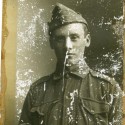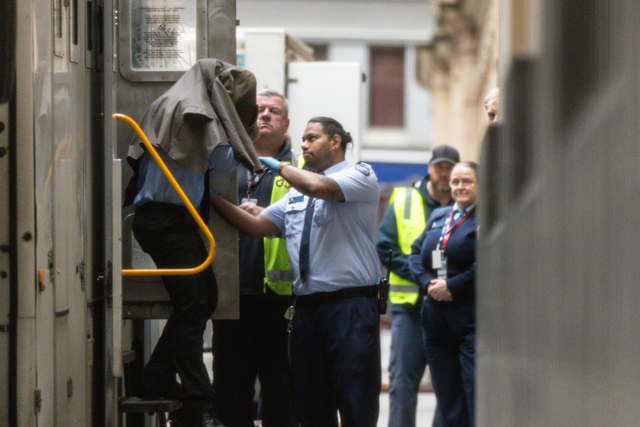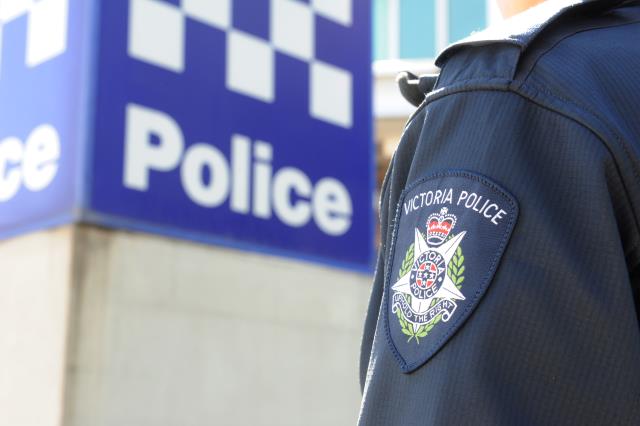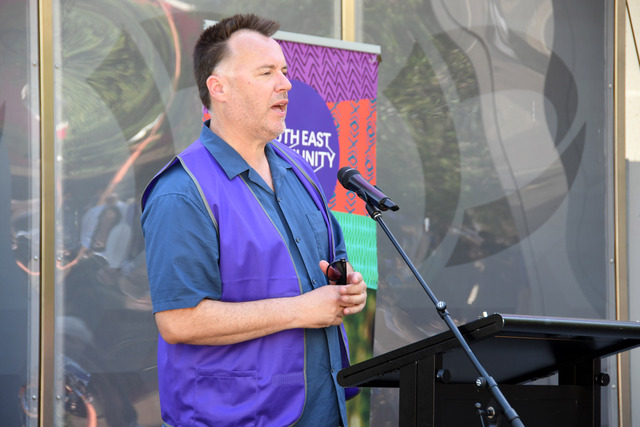
By NARELLE COULTER
ROUSED from what must have been a fitful sleep at 3am on 25 April 1915, Harold ‘Shaver’ Tulloch ate breakfast at 4am and by 5am was ready to take his place in the second wave of landings at Anzac Cove.
The sickening feeling of foreboding must have been palpable as Corporal Tulloch boarded a destroyer at 7.30am and set off for the “decidedly unfriendly looking shore”.
The son of James Tulloch and Emma Webb, Corporal Tulloch was a Dandenong lad.
He attended Dandenong Primary School and became an apprentice printer at the Journal.
He was 24 when he enlisted for war on 17 August 1914 joining G Company of the 8th Battalion.
Corporal Tulloch’s letters home to his colleagues paint a poingnant picture of the mateship and hardship of war.
Writing in June 1915, Corporal Tulloch vividly describes his boat being pelted with shrapnel as it was towed towards the peninsula’s fatal shore on 25 April 1915.
“We kept in the boat till it grounded, then sprang ashore, or rather into water up to our waists, holding our rifles well out of the water, and waded ashore.
“Just as we got ashore shrapnel whistled over our heads and burst over the boat following us, causing about a dozen casualties.”
On shore the company reformed and started advancing towards the enemy over countryside of “high hills and valleys, heavily covered in scrub and prickles; which made things not too pleasant”.
“Every bush seemed to hold a hidden sniper,” wrote Corporal Tulloch “who kept up a consistent fire on us all the time, whilst the enemy artillery swept the hills and valleys with a hail of shrapnel.”
“Soon the men were tired, as they were carrying a pick and shovel as well as their full equipment and short breathing spaces were given as soon as shelter was reached.”
At noon the company finally arrived at the place where they had been instructed to form a firing line.
The men threw all their picks and shovels in a heap and then helped each other off with their packs.
They fixed their bayonets and charged forward up a hill to their position.
“We immediately started to dig in with our small trenching tools and they proved their worth that afternoon,” wrote Corporal Tulloch noting that all afternoon the Turks kept peppering the ridge with shrapnel only cooling the bombardment as night fell.
At 10pm the Turks made their first charge.
“They came on with cries of “Allah, Allah,” and we allowed them to advance to within about 40 yards of us when we opened up on them.
“They soon got tired of this and beat a hasty retreat, carrying as many of their dead and wounded with them as possible.
“They made several other attempts during the night but with the same result.”
It was during that first charge that Alan Couve, another Dandenong lad, was hit and killed. (See sport for the sad story of the Couve brothers)
As Corporal Tulloch was the only non-commissioned officer left in the platoon he took charge until another officer was available.
The next day he was promoted to sergeant.
The battalion held those trenches for a fortnight before being evacuated to Cape Helles for a couple of day’s rest.
During their next assignment the men had just finished digging their trenches when they received orders to advance and support the firing line.
“Nobody understood exactly where the firing line was, so we went straight ahead,” wrote Sergeant Tulloch.
“We passed over some of our own troops entrenched, then on over the Indian troops in support, and finally over the firing line.
“We continued for another 600 or 700 yards and then commenced to dig a fresh firing line.”
The advance was made over open country and under a terrible fire from artillery, machine guns and rifles.
“It was reported that I was wounded, but if this appears in the papers, take no notice of it, as the closest they got to me was to hit my rifle, and one through the leg of my trousers,” wrote Sergeant Tulloch.
It was five days before the men would be relieved.
“It had been raining all day, and was still going strong.
“We started to leave our trenches at 11pm, then the fun began.
“Men were continually getting stuck in the mud, which, in parts of the trenches, was knee deep.
“After falling into the creek, falling into dugouts, etc., wading across the creek about a dozen times, and other little accidental trips into wells and things, we arrived at our halting place at 3am.
“All this time bullets had been whistling down the creek, but only three men were hit.
“As soon as we arrived at our halting place we just threw the waterproofs on the ground and ourselves after them.
“Next morning we did look a lot of guys, covered with mud from head to foot.
“After a good breakfast we again moved off and took up a rest position for three days, when we again went back to our first landing place.
“Again the Turks welcomed us with some more presents but without doing damage.”
Sergeant Tulloch was given a reprive from the front when he was seconded to the “concentration camp” at Imbros to guard prisoners.
He found it a pleasant change “be away from the roar of the guns and shriek of the shrapnel which were presented with every day in our dug out”.
However, by August he was back in the trenches.
In September Sergeant Tulloch was admitted to hospital at Anzac with diarrhoea. Days later he was transfered to Malta with with dysentry and enteric fever (typhoid).
In December he was declared unfit for service and invalided home to Australia.
He died at the Heidelberg Repatriation Hospital in 1963 aged 69.







